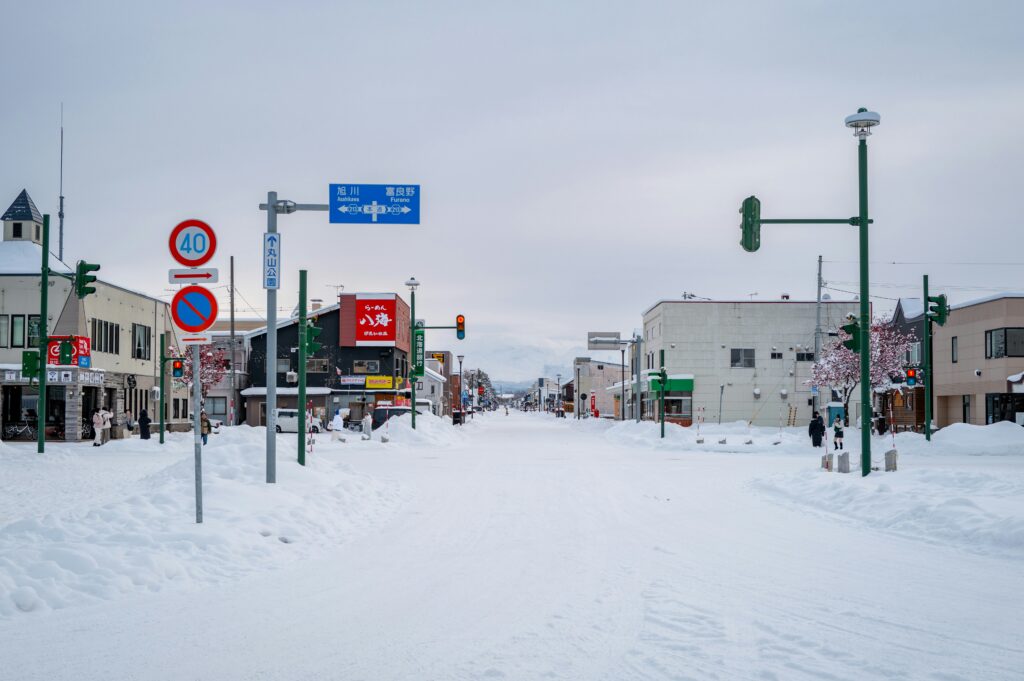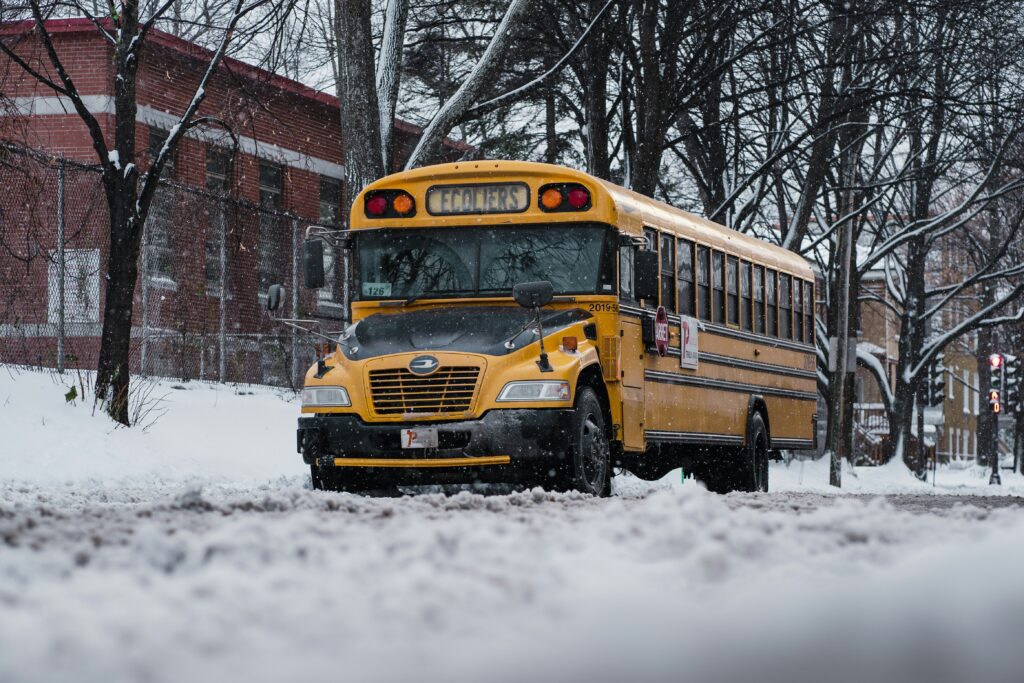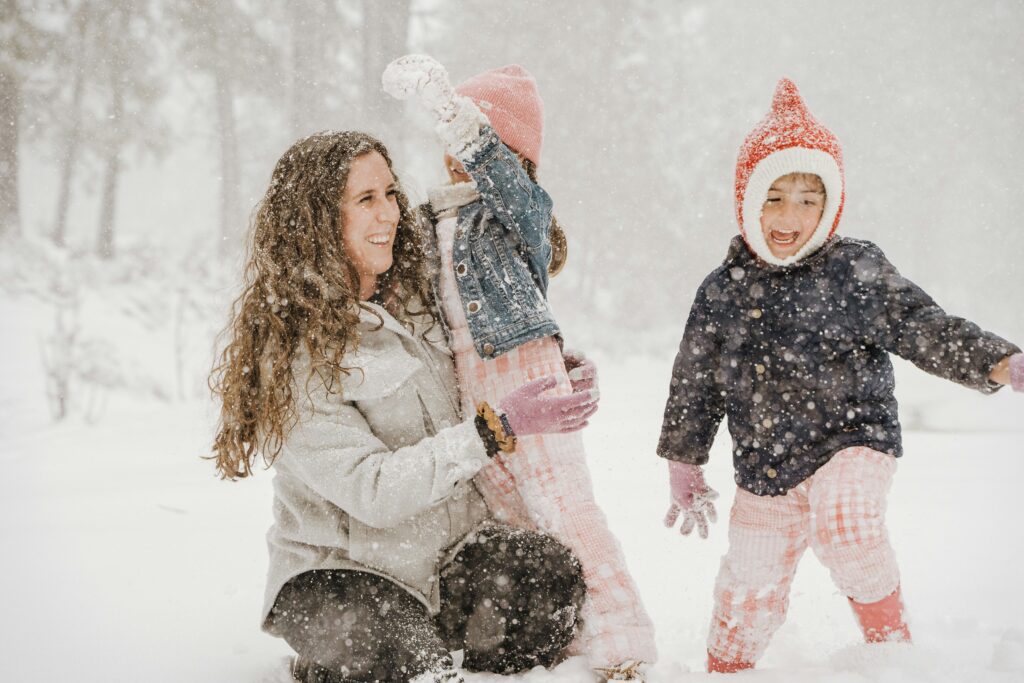
Have you ever wondered, “How many inches of snow does it take to cancel school?” If you’re a parent, student, or teacher, you’ve likely hoped for a snow day during the winter months.
At SnowDayTool.com, our school closing calculator helps you predict school closures by analyzing snowfall data, local trends, and weather forecasts. In this guide, we’ll uncover the typical amount of snow that leads to school cancellations, explore historical patterns, and explain how other factors like snow plows and road conditions play a role.
Let’s dig into the snowy details and see how our school cancel calculator can help you plan for those frosty days in the United States!
How Many Inches of Snow Triggers School Closures?
The amount of snow needed to close schools varies by region, but our school closing calculator at SnowDayTool.com can give you a tailored school closure forecast.
Let’s explore the typical snowfall thresholds and what they mean for your child’s school.
Typical Snowfall Thresholds Across Regions
In many parts of the United States, schools often cancel school when snowfall hits 4–6 inches of snow overnight.
For example, in New York City, schools might stay open with 6 inches if snow plows are efficient, but in rural areas, even 3 inches can lead to school closures due to hazardous road conditions.
The National Weather Service provides snowfall data that schools rely on to make these decisions National Weather Service.
Extreme Snowfall: When It Reaches Feet of Snow
Sometimes, heavy snowfall can pile up to feet of snow, making school cancellations almost certain.
In regions like the Northeast, a storm dropping 1–2 feet of snow—like the 2016 Blizzard Jonas, which dumped 26 inches in NYC—can close elementary school and middle school for days. Our snow day prediction tool uses historical data to predict these extreme scenarios.
Why Some Schools Close With Less Snow
In milder climates, even 1–2 inches of snow can close schools because of limited infrastructure. Private schools in warmer areas might lack snow plows or efficient heating systems, leading to quicker school closures.
Our school cancel calculator adjusts for these regional differences to provide accurate insights.

Historical Snowfall Trends: Lessons for Your School Closing Calculator
Looking at past school cancellations can help predict how much snow leads to closures. Let’s explore historical trends and what they reveal about winter weather impact on schools.
Famous Snowstorms That Cancelled School
Historical snowstorms offer valuable lessons. The 1996 Blizzard in the Northeast dumped 20+ inches of snow, closing schools for a week.
In 2021, a Chicago storm with 10 inches led to school closures due to snow-covered roads and power outages. These events help our school closing calculator refine its predictions based on past patterns.
Regional Patterns During the Winter Months
During the winter months, schools in snowy regions like the Midwest often close with 8–10 inches of snow, while southern states might close with just 2 inches.
Study shows that rural districts, with more hazardous road challenges, tend to close faster than urban ones with better emergency management National Weather Service.
How Climate Change Affects Snowfall and School Closures
Climate change is shifting snowfall patterns. Weather forecasts now show more extreme cold and heavy snow events in some areas, while others see less snow but more freezing rain. This impacts how schools plan for school cancellations, and our snow day prediction tool stays updated with these trends.
Want to know how our calculator processes this data? Check out our post on How Does the Snow Day Calculator Work?
Beyond Snowfall: Factors That Influence School Cancellations
While inches of snow are a key factor, other elements can lead to school closures. Here’s what else affects the decision to close schools.
The Role of Snow Plows and Road Clearing
Snow plows can make or break a school’s decision. In cities with strong emergency management, like New York City, roads might be cleared quickly after 6 inches of snow, keeping schools open. In rural areas, limited snow plows can lead to closures with less snow due to hazardous road conditions.
Additional Weather Challenges in Winter Storms
Bad weather like freezing rain, high winds, or cold temperatures can amplify the impact of snow. For example, 4 inches of snow with a chill warning (wind chill below -20°F) might prompt closures due to air temperature risks. Power lines downed by high winds can also force schools to cancel school.
School Logistics and Safety Priorities
School buses need safe routes, and heating systems must keep buildings warm. If low temperatures strain infrastructure or safety concerns arise (e.g., icy walkways), schools prioritize student safety and may close schools, even with moderate snow.
Curious about how weather affects your odds? Read our post on What Are the Chances of a Snow Day Tomorrow?.

How Does Snowfall Impact School Operations and Families?
When much snow falls, it affects more than just the decision to close schools. Let’s explore the broader winter weather impact on school operations and families.
Challenges for School Buses and Transportation
School buses struggle with snow-covered roads and hazardous road conditions. A district might cancel school if buses can’t operate safely, especially for elementary school students who rely on them. High winds can also reduce visibility, adding to the challenge.
Effects on In-Person Learning and School Activities
Heavy snow can disrupt in-person learning by delaying openings or closing schools entirely. Some districts switch to remote learning, but power outages or heating systems issues can make this difficult, especially in middle school settings with limited tech access.
Family Impacts: Childcare and Community Adjustments
School cancellations affect families, too. Parents may need to arrange childcare or adjust work schedules. Community engagement efforts, like after-school programs, might be paused, leaving families to adapt to the snowy day.
Want to know how accurate our predictions are? Check out our post on How Accurate Is a Snow Day Calculator?.
[Internal Link]: Planning for a future snow day? Read our upcoming post on How to Prepare for a Snow Day (Placeholder: Replace with actual URL when live.).
Get Ready for Snow Days with Our School Closing Calculator!
Don’t let winter weather catch you off guard. At SnowDayTool.com, our school cancel calculator helps you predict school closures by analyzing weather forecasts, historical trends, and local factors. Here’s how to use it:
Enter Your Location for Tailored Insights
Just input your location, and our school closure forecast tool will estimate how many inches of snow might close schools in your area, factoring in local emergency management and school policies.
Stay Updated with Real-Time Weather Data
Use the prediction to plan for childcare, adjust your schedule, or get ready for a fun snow day with your family. Whether it’s building a snowman or staying cozy indoors, you’ll be prepared!
Looking for more snow day tips? Explore our Blog for ideas!

Conclusion
Understanding how many inches of snow for school to be cancelled can help you plan for those snowy days. At SnowDayTool.com, our school closing calculator uses snowfall data, historical trends, and weather forecasts to predict school closures with ease.
Don’t let winter weather surprise you—visit SnowDayTool.com, use our snow day prediction tool, and stay ready for those frosty mornings! Check If School Will Close!
